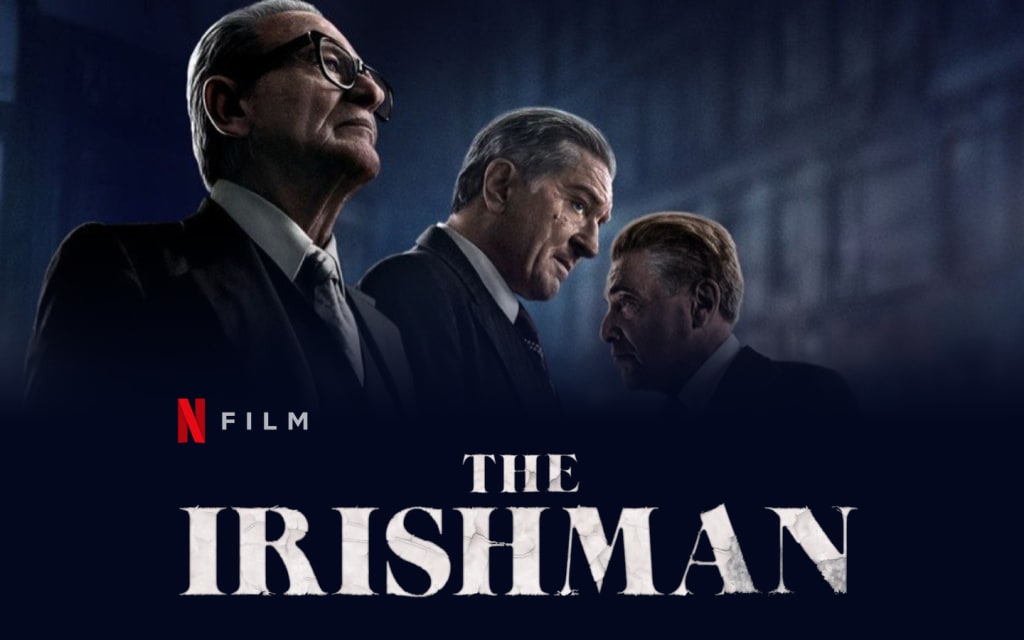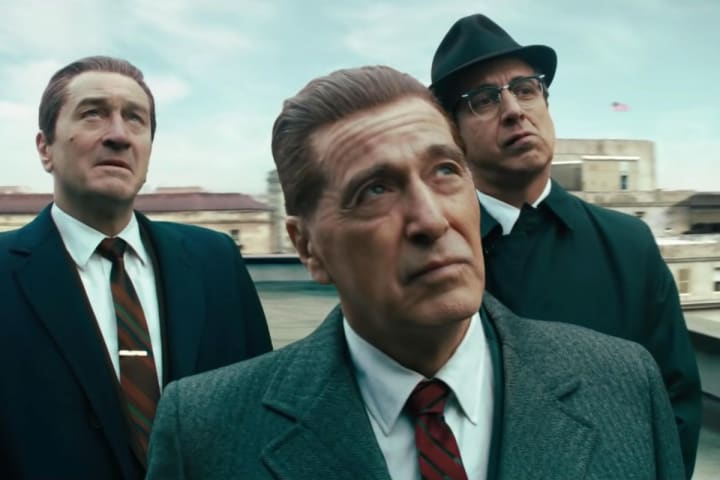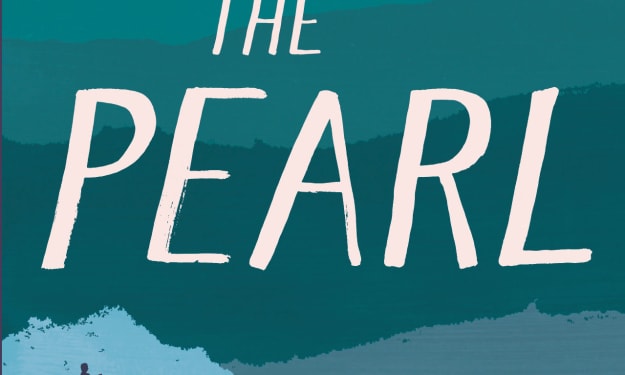The Irishman: by Martin Scorsese
A Critique

I wouldn’t be surprised if I’m not the only person typing their critique up about this film. What Scorsese was able to accomplish in the time span of three hours and twenty-nine minutes is in itself astonishing; but doing it with such elegance and respect to the plot line that it was involved with is admirable in its own right. Whether you believe it or not, the mob is alive and well to this day. A film that covers one of the more fragile moments in their establishment’s history, is depicted with genuine character acting by two of the best actors in our generation, along with cinematography and music production of the highest caliber.
Directed by the man him-self, Martin Scorsese, The Irishman is a film that follows the true story of a man by the name of Frank Sheeran. A meat truck driver turned hitman. That plot line sells it-self. Now add in the fact that it was for the Bufalino family and its all a true story (for the most part) and you get an absolute masterpiece from some of Hollywood’s best. The movie established the theme and constant tone of uncertainty off the bat. A zooming close up of actor Robert De Niro or in this case Frank Sheeran. We’re in a retirement home as Frank is being interviewed. The first remarks by Frank are “When I was young, I thought house painters painted houses.” As a viewer you wonder what this old man is talking about. Frank explains how he was the head of a teamster’s union out in Philadelphia, until he started “painting houses.” Then he asks, “Have you ever painted houses before?” After that question is asked a scene is cut to someone shooting a pistol and blood splatter “painting” the walls. The tone is set and we’re ready for a wild ride.
That scene not only establishes the tone, but it also establishes our narrator for the film, Frank. This whole film is from Franks point of view and as far as we know the best of his recollection at this early stage of the film. I say recollection because of the age of Frank in the first scene. He’s very old and frail, and he tells his story our setting changes as we follow a younger Frank and others through their journey and experience through mob life in the 1970s. So, in other words it’s all filmed in flashback with voice-over or in camera acting. Right away we get an immediate inclination of masculinity and hard conditions. Three different shots, three different cuts; one at the butchery where a perspiring and muscular man cuts the throat of a chicken, the next being a group of men out in the meat trunks carrying large pieces of beef, then we’re at the bar pouring shots of whiskey in our only good suit. We have a panning shot down the bar table where we establish all the “tough guys” in the room. Here is where Frank would establish his connections and we meet several key characters in the film. Scorsese takes full advantage of the social aspect of bars in this film. Most of this film is shot in bars or restaurants of some sort to set up crucial moments between characters.

Frank is arraigned on theft charges and is eventually helped by the mob to get off. This scene in particular plants Franks loyalty to those he owed. Foreshadowing with this film came somewhat obvious at points but nevertheless it keeps you engaged. For example after Franks court scene he narrates that he couldn’t have done it without the “Bufalinos” and it leaves you wondering who the hell they are. Scorsese wastes no time and introduces us to Russell Bufalino and the rest of the crew at a bar and restaurant, again signifying the importance of the scene. Relationships are established relatively quickly to keep the film moving at a consistent social pace. After meeting the likes of Russel and Angelo Bruno, he is introduced and intertwined with the likes of Jimmy Hoffa. An infamous American Labor Union leader who was the president of the international Brotherhood of Teamsters. At face value these people were the best thing to ever happen to middle class working America; come twenty minutes and twenty-nine seconds into the film we hit a dark and eerie reality.
We see Russel walk in from his back door. Our view is from the front room as he strolls patiently down the hallway towards us with natural moonlight defining his figure. As he turns the corner to meet his wife at the bottom of the staircase, key light accentuates the look of or lack thereof, emotion, in Russel’s face. He’s covered in blood, clearly from some sort of act of violence. His wife, unperplexed as she directs him upstairs to clean up, she’ll wash the clothes. It’s a scene right out of the Sopranos. You know exactly who the people Frank Sheeran is dealing with now.
Scorsese transitions from a panoramic view into dolly shots calculatedly. Every room has people he wants you to focus on. The key to Scorsese’s brilliance is that he forces you to focus on everyone at the same time in each individual scene. By introducing each scene panoramically, and establishing our characters in one frame, helps for when he transitions the social tone of the scene and people start to do different things. He does that by using multiple cuts to different dolly shots. There are brief perspective shots when there are killings. Sometimes it was used for the killer, and some for the victims. Each murder throughout this film quick and repetitive. Frank has a technique he likes to utilize when he paints. It requires a consistent style of videography of hard cuts and montage like repetitiveness. It helps put emphasis on two things about Frank; he’s moving fast and he’s going to crash.
The film gives a nod to the mafia with their use ambiguous phrasing in the script writing. The coded language used by much of the underground criminal constituency at the time is a script writers dream. Phrases like “do you paint houses?” or “you want to take a walk?” can mean whatever you want it to be. Playing with words is like playing with playdough for writers in screenplay. The biggest example of ambiguous language is when at the end of the movie it was time for an executive decision amongst the chosen few of the organization to be carried out. Frank was to do the job. That was to kill Jimmy Hoffa. Jimmy was in Detroit at the time and we cut to a scene of him at one of his rallies for Teamster Presidential elections. Then we cut to a scene of Frank asleep on his couch, only to be waken by Russel. Russel tells Frank “You’re going on a plane.” Frank who understands, asks where and Russel says Detroit. As the viewer at this point, we know what’s going on and what’s going to happen, but we’re still captivated by the casualness of violence the scenes bring. Scorsese forces your appetite for unpredictability in this film.
Head to head with similar films, The Irishman holds it own. Scorsese does his best with the lengthy story line tradition ala the Godfather. Although this film was based on a true story, I feel like that lead to a bit of lack of creativity as far as unpredictability went. That’s fine with me though. In any film depicting reality, I want no fictitious inconsistencies, just fact as much as possible. That’s where I find the Godfather to be a more dynamic body of work due to the fictional nature of the characters there is more room to take chances with their script writing. The Irishman is a classic in its own respect due to quality of acting and emphasis on videography. With a budget of 124 million dollars, it is safe to say Scorsese did his best to leave no stone unturned in this biopic.
About the Creator
Benjamin Reese
My degree is in Communications with a focus on Journalism and a minor in Political Science.






Comments
There are no comments for this story
Be the first to respond and start the conversation.